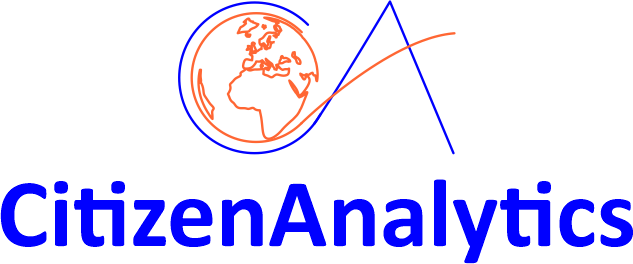David Guggenheim
Dave’s entrepreneurial journey began with the Chicago Cubs baseball team. No, he didn’t play shortstop nor was he on the coaching staff but he was part of the team that put WGN 9 Chicago on the satellite. This created one of the first superstations in the USA and all because WGN had a lease to broadcast every Cubs game. The business model was simple – Cubs fans may leave Chicago but they never stop being Cubs fans, and this notion was supported by the 10 million subscribers we achieved after just a year in operation.
From baseball to the Golden Gate, he next undertook a project to build a satellite communications and telecom switching facility in the Bay Area of San Francisco. The construction and operation went so well he was promoted from San Francisco satellite chief to head of national networks – a promotion that required a move from the Embarcadero, Chinatown, and impromptu U2 concerts to Englewood, New Jersey.
Shortly thereafter, he escaped from northern New Jersey in the dead of night while the guards were sleeping and became a minor functionary at Comsat Corporation in Washington D.C., where he worked in the shadows while the guards were fully awake.
After spending several years on the hardware side of telecommunications, including participating in advances such as software-defined networking, Dave leveraged his business acumen and project management skills to jump into enterprise software development, which led to business analytics – as a problem solver, Dave found a home in data analytics. One of the first problems was solving customer churn in telecommunications, and no, the IBM Telecom Churn dataset does not include the single most important predictor!


Here are Dave’s business stats:
- Number of countries in which business was conducted: 25
- Value of negotiated contracts: $100 million+
- Amount of venture capital raised: $22 million
- Won the GSM World Award for Best Technical Innovation
- Value of amazing people met around the world: Infinite
But up to this point, as an accomplished autodidact Dave was lacking a college degree. So he returned to school and earned three of them, bachelors, masters, and doctorate.
Fresh with a PhD, he created the MIS program at Berea College, including advanced Excel for solving convex minimization problems, data science with R, and deep learning with Tensorflow. Moving to the University of Illinois, he was hired as the course coordinator for BADM 211 Business Analytics II, the required course in Python-based machine learning for all business students. He experimented each semester by expanding the data mining process stack and learning models to improve predictive outcomes to par with professional business decisions. Still, the technology demanded a certain level of simplification, which impacted performance.
Nevertheless, it was at the Gies College of Business where Dave formulated his vision for citizen data scientists, a vision for democratizing business-professional data science. But ideation-to-realization would have to wait for technology to catch up, and when the conditions were right, Dr. Guggenheim embarked on his ninth venture, first by writing Empowering the Citizen Data Scientist in Everyone – The No-Code, Low Math Toolkit for Data Analytic Excellence. Turning every business student and working professional into a citizen data scientist is next…

Dave’s Research

Tackling a number of unanswered questions in machine learning, he teamed up with his students in two cases and solved long-standing problems in feature scaling, visualizing confusion matrix transfers, predicting with multiple futures instead of just one, and the creation of algorithmic ensembles for superior predictive performance.
Future-Proof Your Data Partitions | by Dr. Dave Guggenheim | Towards Data Science (medium.com)
Contemplating on the nature of the train/test split as a predicate to bias and variance, Dave explored the variability expressed by individual datasets across a large number of randomly defined splits. This work culminates with In Search of the Perfect Machine Learning Model.
For 50 years, data scientists have followed a simple set of rules for choosing a feature scaling method, which called for a ‘fit’ between the feature scaler and the learning model. These rules were wrong because the theory was incomplete, and an improved set of ‘misfit’ rules are offered to raise bias and lower variance. In addition, a new feature scaling algorithm, the feature scaling ensemble, was introduced and offered significant performance improvements.
Taking the feature scaling ensemble into a new direction, this work demonstrates the power of regularization by visualizing it, and how the new ensemble algorithm can transform old-school logistic regression into a multinomial prediction powerhouse.
The Mystery of ADASYN is Revealed | by Dr. Dave Guggenheim | Towards Data Science (medium.com)
What happens to predictions on test data when ADASYN is applied to the training data to address class imbalance, and especially what is happening in the test confusion matrix, before and after? The answers are here.
Following the notion that a single split of the data anticipates a single future, Dave created super ensembles of learning models to compare against single models, and then he split each dataset 100 times to simulate a fuzzy future outlook. This work, consisting of more than 25,000 experiments, has been described as ‘revolutionizing the risk management industry.’

Our Vision
It took me a year to write the book, “Empowering the Citizen Data Scientist in Everyone,” and in addition to my knowledge of business analytics, it contains all of the data mining process flows in Jupyter notebooks hosted in Google Colab. The datasets, platforms, and mining notebooks are all in the cloud and open source so a student could use a Chromebook and conduct professional data science. This is business analytics as taught by the professor who helped Verizon predict customer churn in the early days of data science, and who solved a 50-year problem in data science with an undergrad.
The business students who complete this material will have the ability to perform predictive and interpretable models with errors within 1-1.5% of a technical data scientist, and because of its conceptual nature, the knowledge will stay with them for a long time. This closes the gap between subject matter experts and data scientists, which then allows a reallocation of resources within the firm such that the top-level data people will work on the more difficult problems instead of routine.
Our Mission
Transform Data Science Education with CitizenAnalytics LLC
Unveil the Power of Data with “Empowering the Citizen Data Scientist in Everyone”
CitizenAnalytics LLC introduces an innovative approach to data science education, as detailed in our latest publication: “Empowering the Citizen Data Scientist in Everyone”.
Revolutionize Data Science Learning
Innovative Curriculum: Based on the principles and insights from our groundbreaking book.



